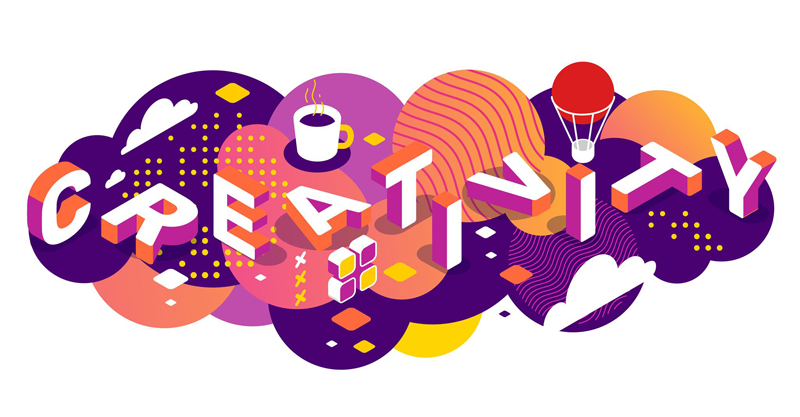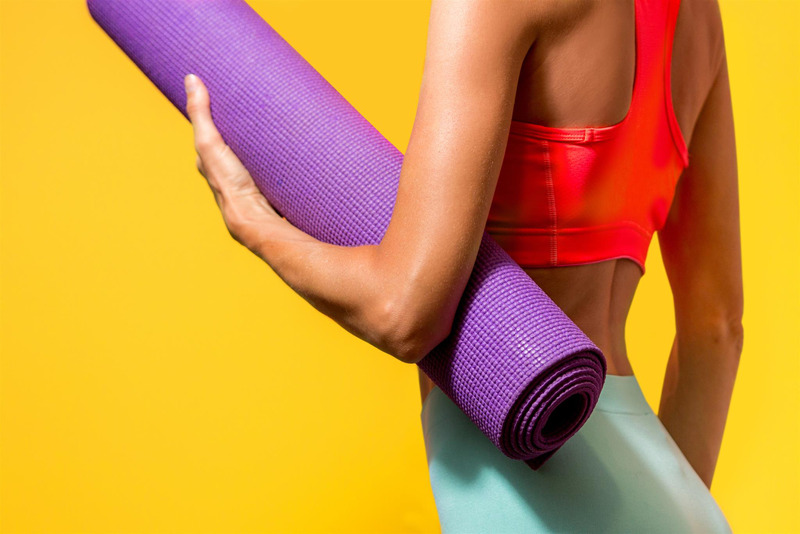
Common Yoga Mistakes and How to Fix Them
11th October 2018
What Does a Weekly Yoga Routine Look Like?
18th October 2018How Yoga and Meditation Can Boost Your Creativity

As well as improving your physical health, yoga can be used to boost your creativity. For many years, the connection between yoga and creativity has been studied closely. The results have shown that the brain waves of yogis and creatives are very similar.
Even the most creative individuals experience creative block. In many professions, this may not affect you; however, in certain jobs, it can be a real nuisance – especially if your source of income depends on it. Thankfully, studies have shown that yoga can help creatives to stay in ‘the zone’. So next time you’re feeling stuck for ideas, put on your yoga shorts and take a few minutes out. In this article, we explore how yoga can boost your creativity.
Brainwaves and Creativity
Although many yogis know there’s a connection between yoga and creativity, many don’t understand the science behind it. To get to grips with this, we must first explore which parts of the brain are active during creative work.
In their book ‘The Eureka Factor: Aha Moments, Creative Insight, and the Brain.’, John Kounios and Mark Beeman explore what happens to the brain when creative insights occur. They then question whether science can be used to replicate these conditions. According to their research, creative insights are most likely to occur under the following conditions:
Relaxed state. When we are relaxed, the brain activity slows from fast beta waves to slower alpha waves.
Positive emotional state. Creativity is also most likely to spark when we are happy.
Meta-awareness. This is being aware of our own emotions and thoughts.
In their book, Kounios and Beeman explain how the frontal cortex brain waves slow down when we are relaxed. The change in brainwaves allows us to solve problems more easily and come across new insight.
Brainwaves and Yoga
Similarly to Kounios and Beeman, brain researchers Elmer and Alyce Green explored which areas of the brain are stimulated when using yoga. During their study, the Greens discovered that the brain waves are slowed to alpha rhythms during yoga practice. By the end of the session, the brain waves slowed even further to theta rhythms.
Studies have shown that theta activity can also be achieved through meditation. Associated with deep relaxation and inspiration, inducing theta brain activity could help spark creativity. Essentially, this means that practising yoga can slow the brain waves and create the brain state associated with creativity. However, alpha brain waves are more beneficial for problem-solving. So if you’re hoping to solve a problem there and then, inducing alpha activity is your best bet. But what is the best way to achieve this state?
How to Harness Creativity
Theta Brain Waves
If you’re looking to spark creative insight, Yoga Nidra can encourage theta brain waves. Research has shown that this area of yoga can help you enter a theta state within minutes. Once the brain waves have slowed, you’re in a better position for creativity and inspiration to strike. Meditation is also a great way to encourage theta brain rhythms. Inducing a deep state of relaxation, just 10 minutes of mindful meditation can prevent creative block.
Alpha Brain Waves
If you’re solving a creative problem rather than looking for inspiration, try to encourage alpha brain waves. Typically, the best way to achieve this is through mantra meditation or dynamic yoga work out such as vinyasa flow.

Poses to Enhance Creativity
Pigeon Pose
Releasing tension from the body, Pigeon Pose is ideal for sparking creative insight. Better still, the posture focusses on the hips and pelvis; this area of the body is aligned with the second chakra, which represents creative energy.
To practice the asana, begin on all fours. Bring your right knee forward and place it behind your right wrist. Next, move your right ankle in front of your left hip. Sliding your left leg back, straighten your knee and point the toes. Try to keep your leg behind your body and your heel pointing towards the ceiling. Keeping your hips square, move your legs towards each other and lower yourself down to the mat. As you inhale, lift your upper body and come onto your fingertips, keeping your hands shoulder-width apart. On the exhale, walk your hands forward and lower your upper body toward the ground until your forearms are resting on the mat. Finally, lengthen your leg and rest your forehead on the mat. You are in Pigeon Pose. Hold the asana for 5 breathes to release tension throughout the body. To exit the posture, push back through your hands move onto all fours.
Child’s Pose
Designed to relax the mind, Child’s Pose can boost your creativity. Additionally, the posture releases built-up tension to leave you feeling free and supple.
To practice Child’s Pose, begin by kneeling on the mat. Next, inhale and sit back on your heels. As you breathe out, walk your hands out in front of you until your chest is touching the mat. If it is comfortable, rest your forehead on the mat and relax your arms by your sides. You are in Child’s Pose. Hold the asana for around 30 seconds, or as long as it feels comfortable to do so.
Easy Pose
Inducing a state of deep relaxation, Easy Pose can be used to boost creativity. As the name suggests, the posture is super easy to practice! All you need to do is lie down on your back and relax your arms by your sides. If practised at the end of your session, Easy Pose can be used to reflect on the class and relax the mind before heading home.
In Summary
If you’re experiencing creative block, don’t force yourself to be productive. Instead, get your yoga leggings on and practice the asanas above. Before long, your creative juices should be flowing naturally!

